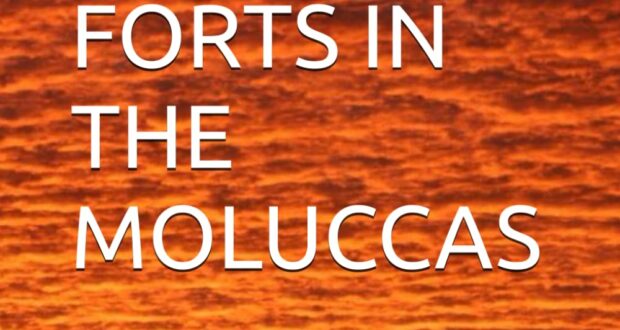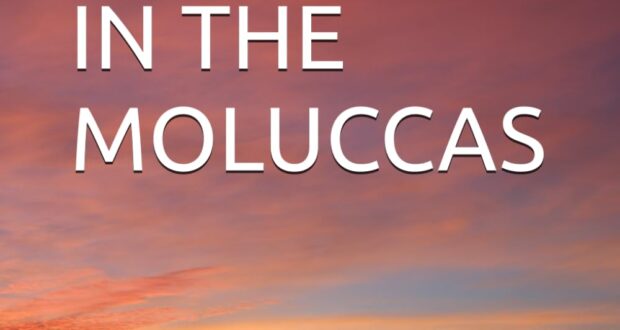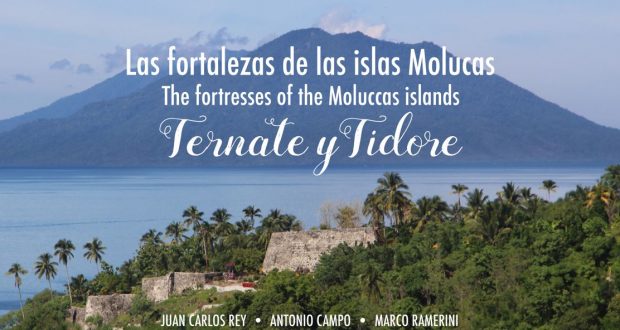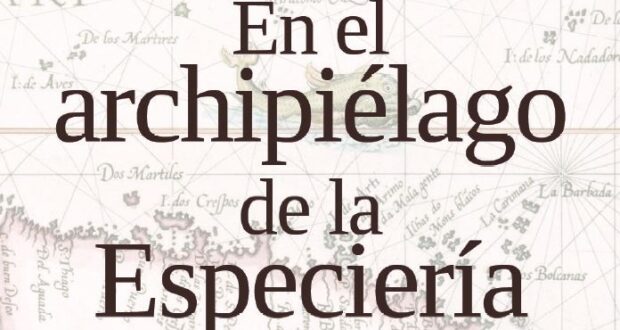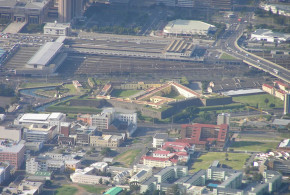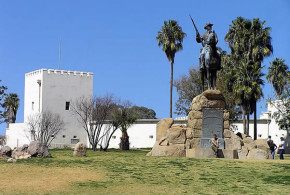Written by Marco Ramerini. English text revision by Dietrich Köster. The French ports of Normandy, especially Rouen and Dieppe, had a flourishing textile industry and thus became the principal competitors in trade for Portugal in Brazil in the 16th century. Due to the presence of vast forests of “Pau Brasil” on the Brazilian coast (used in the process of cloth ...
Read More »Dutch in Chile: Hendrick Brouwer’s expedition to Valdivia
Written by Robbert Kock. English text revision by Dietrich Köster. Since the Spaniards arrived in Chile in 1535, Valdivia was one of the first cities, which the Spanish colonists founded. The city, founded in 1552, was named after the Spanish explorer Pedro de Valdivia. He became the first governor of Chile from 1541 till 1553. The main reason for the ...
Read More »New Sweden: The Swedish settlements in North America
Written by Marco Ramerini. English text revision by Dietrich Köster. The King of Sweden as early as 1624, encouraged by Willem Usselinx, was planning an expedition to North America, but the Thirty Years’ War stopped his plans. In 1632 the Walloon, a former Governor of Dutch New Netherland, Peter Minuit offered his services to Sweden. He planned to establish a ...
Read More »Dutch New York: The Dutch settlements in North America
Written by Marco Ramerini. English text revision by Dietrich Köster. The 17th century Dutch colony of Nieuw-Nederland was situated between the South River (Delaware River) and the Fresh River (Connecticut River) with his center on the North or Great River (Hudson River) practically in the present US States of New York, Delaware, Connecticut and New Jersey. The Dutch connection with ...
Read More »Colonia del Sacramento: a Portuguese Fortress on the River Plate (Río de la Plata)
Written by Marco Ramerini. Photos: by Pedro Gonçalves. English text revision by Dietrich Köster. In 1680 the Portuguese founded along the northern bank of the River Plate (Río de la Plata/Rio da Prata) opposite Buenos Aires the fortress of Colónia do Sacramento (today Colonia del Sacramento, Uruguay). The city was of strategic importance in resisting to the Spanish. Spaniards conquered ...
Read More »Dutch and Courlanders on Tobago. A history of the first settlements 1628-1677
Written by Marco Ramerini. English text revision by Dietrich Köster. This beautiful and rugged island of the Caribbean (with an area of about 300 square kilometres) lies in front of the delta of the Orinoco River. Its position is a rather strategic one. Indeed, from here one can dominate the coasts of Venezuela as well as that of Guyana and ...
Read More »The Jesuit Missions in South America: Jesuits Reductions in Paraguay, Argentina, Brazil
Written by Marco Ramerini. English text revision by Geoffrey A. P. Groesbeck The Indios Guaraní of Paraguay, Argentina and Brazil would have been another indigenous people victim of the colonial conquest in South America, if the Jesuits would haven’t been able to persuade the King of Spain to grant that vast region to their care. The Jesuits promised to the King ...
Read More »The Russians in America: Alaska and California
Written by Marco Ramerini. English text revision by Dietrich Köster. The Russian explorers reached the Pacific through Siberia in 1639. The Tsar sent later two expeditions in 1728 and 1741 under the command of Vitus Bering and Alexei Chorikov. They discovered the Aleutian Islands and Alaska. A profitable fur trade was established, Russian temporary settlements in the Aleutians and on ...
Read More »Kilwa: a Portuguese Fort in Tanzania
Written by Marco Ramerini. Photos by Alan Sutton Situated along the coast of Tanzania, Kilwa fort was built by the Portuguese in 1505 and was the first stone fort built by the Portuguese along the coast of East Africa. The construction of the fort was the work of the sailors and soldiers of the squadron of D. Francisco de Almeida, ...
Read More »The Castle of Good Hope: A Dutch Fort in South Africa
Written by Marco Ramerini. English text revision by Dietrich Köster. The Castle of Good Hope (Kasteel de Goede Hoop) is the oldest building in South Africa, it was built by the Dutch East India Company (VOC, Vereenigde Oost-Indische Compagnie) between 1666 and 1679; it was built in stone in substitution of a first wooden fort which was built in 1652 ...
Read More »The Dutch in South Africa, 1652-1795 and 1802-1806
Written by Marco Ramerini. English text revision by Dietrich Köster. The Dutch settlement history in South Africa began in March 1647 with the shipwreck of the Dutch ship Nieuwe Haarlem. The shipwreck victims built a small fort named “Sand Fort of the Cape of Good Hope”. They stayed for nearly one year at the Cape. Finally they were rescued by ...
Read More »The Dutch Heritage in South Africa: the Afrikaans Language and the Dutch Reformed Church
Written by Marco Ramerini. English text revision by Dietrich Köster. THE AFRIKAANS LANGUAGE Afrikaans is a language of Dutch origin and structure similar to Flemish; it’s also influenced by various African languages and by Portuguese, German, French and Malay. Afrikaans was declared an official tongue of South Africa besides English in 1925. Afrikaans is not only spoken by the White ...
Read More »The Fortress of Santo António da Ponta da Mina, Principe Island
Written by Marco Ramerini, photos and information by James Leese. English text revision by Dietrich Köster. According to a source dated 1815, this was the situation of the Portuguese forts on the island of Príncipe, in particular in the Bay of San António, where almost all the boats anchored: the two main defenses of the bay were the fortress of ...
Read More »The revolt of the slaves on the African island of São Tomé 1595
Written by Marco Ramerini. English text revision by Dietrich Köster. The revolt of Amador, named after the slave who led it, is the most important attempt of rebellion that has ever happened on the island of São Tomé. The revolt of the slaves of the island began on July 9, 1595. The leader of this revolt was from the beginning ...
Read More »The Dutch on São Tomé and Principe: the attacks on the island of Principe (1598) and São Tomé (1599)
Written by Marco Ramerini. English text revision by Dietrich Köster. Shortly after the Union of Spain and Portugal, Philip II imposed the ban on the Dutch to trade and use the Iberian ports, this act was the result of the Dutch rebellion against the Spanish king, and it suddenly kept the Dutch away from the supply of goods from the ...
Read More »The German Fort Alte Feste in Windhoek, Namibia
Written by Marco Ramerini. English text revision by Dietrich Köster. The Alte Feste Fort was founded by the German commander Curt von François in 1890. He laid the foundation stone for the construction of the fort on 18 October 1890. It is therefore the oldest building in the city of Windhoek, the capital of Namibia. The fort is located high ...
Read More »The Dutch on Mauritius 1638-1658, 1664-1710
Written by Marco Ramerini. English text revision by Dietrich Köster. Mauritius was discovered in 1505 by the Portuguese navigator Domingo Fernandez, who named it “Ilha do Cerne”, a corruption of Ilha do Cisne, meaning Swan Island. The Portuguese used the island as a fresh food reserve for the ships bound for India. The first Dutchman visiting the island was Wybrant ...
Read More »A Portuguese fort in Madagascar: the fort near Tolanaro
Written by Marco Ramerini. English text revision by Dietrich Köster. The big island of Madagascar was discovered in 1500 by a Portuguese fleet under the command of Diogo Dias, which was part of a fleet of 13 ships commanded by Pedro Álvares Cabral. The Portuguese called the new discovered island Ilha de São Lourenço. The island was visited several times ...
Read More »Data on the independence of Portuguese colonies
Written by Dietrich Köster. Brazil – 07 September 1822 Cape Verde – 05 July 1975 Portuguese Guinea – unilateral proclamation: 24 September 1973, definitive independence: 10 September 1974 São João Baptista de Ajudá – occupation by the Republic of Dahomey (Benin): 01 August 1961 São Tomé and Príncipe – 12 July 1975 Angola – 11 November 1975 Mozambique – 25 ...
Read More »African Countries with Portuguese as an Official Language
Written by Dietrich Köster © June 2012 by Dietrich Köster, D-53113 Bonn Cape Verde Official name: Republic of Cape Verde Capital city: Praia Language: The official language is Portuguese, besides Creole is spoken. Population: 530,000 Area: 4,036 sq km Currency: Cape Verde Escudo (CVE) Independence Day: 05 July 1975 Guinea-Bissau Official name: Republic of Guinea-Bissau Capital city: Bissau Language: The official ...
Read More » Colonial Voyage The website dedicated to the Colonial History
Colonial Voyage The website dedicated to the Colonial History

